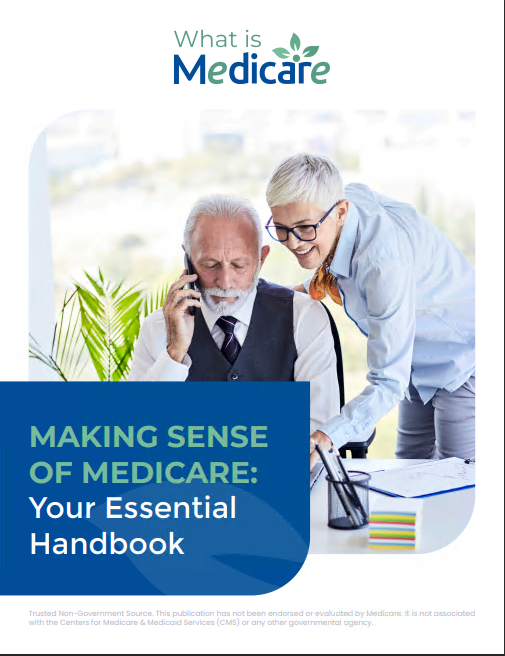Key Takeaways
-
Starting in 2025, Medicare Part D includes a $2,000 annual cap on out-of-pocket prescription drug costs, bringing long-awaited financial relief to beneficiaries.
-
This isn’t just a price cap—it’s a comprehensive structural reform that changes how you move through drug coverage phases and what financial protections you have.
A Cap That Changes More Than Just Costs
You may have heard that Medicare now caps your annual prescription drug costs at $2,000 under Part D. While that sounds like a welcome limit, the reality is much more significant. It marks the end of the coverage gap era and introduces a restructured benefit design that impacts how you pay throughout the year.
This change takes effect January 1, 2025, and applies to all standard Medicare Part D plans. Whether you get your drug coverage through a stand-alone plan or through a Medicare Advantage plan with drug benefits, the new $2,000 cap applies.
Why the $2,000 Cap Matters
Until now, your prescription drug spending under Medicare Part D moved through multiple stages:
-
Deductible phase
-
Initial coverage phase
-
Coverage gap (donut hole)
-
Catastrophic coverage phase
Each phase came with its own cost-sharing rules, making it hard to predict how much you’d pay over a year.
In 2025, this confusing progression ends. You will only pay until you reach $2,000 in out-of-pocket costs for covered drugs. After that, your plan pays 100% of the costs.
A Closer Look at What’s Changing
Here’s what makes the 2025 Part D structure so different:
1. The Coverage Gap Is Gone
Previously, many people fell into the so-called donut hole—a period when you paid a larger share of your drug costs until you hit catastrophic coverage. As of 2025, this gap no longer exists.
You move smoothly from the deductible to full coverage once you hit the $2,000 cap.
2. Catastrophic Coverage Phase Has Been Eliminated
Under the old system, once you spent enough to enter catastrophic coverage, you still paid 5% of drug costs for the rest of the year. Starting in 2025, that’s gone. After reaching $2,000 in spending, you pay nothing more for covered drugs.
3. Drug Manufacturer Contributions Change
Drug manufacturers now must pay 10% of the cost of brand-name drugs during the initial coverage phase and 20% after the $2,000 cap is reached. This shifts some financial responsibility off of you and onto drugmakers.
4. Medicare Prescription Payment Plan Debuts
Another major change for 2025 is the launch of the Medicare Prescription Payment Plan. This lets you spread your out-of-pocket drug costs across the year instead of paying a large amount upfront.
For example, if you know your drug costs will hit the $2,000 cap early in the year, you can opt into the payment plan and make monthly installments instead. This feature is optional but helpful if budgeting is a concern.
Who Benefits the Most
The new $2,000 cap helps almost everyone, but certain groups see the greatest impact:
-
People with chronic conditions who take high-cost medications throughout the year
-
Retirees on fixed incomes who struggled to afford even subsidized drug costs
-
Those in the middle-income range who previously didn’t qualify for extra help but faced high drug expenses
This change also protects you from price shocks during emergencies when a new medication becomes necessary midyear.
How the New Cap Interacts with Existing Programs
If you currently receive Extra Help (also known as the Low-Income Subsidy), your costs are already limited. In 2025, this program is expanded to include more people and further reduce out-of-pocket expenses.
Even if you don’t qualify for Extra Help, the $2,000 cap offers a clear safety net.
If you have a Medigap plan, be aware that these do not cover prescription drugs. Your Part D plan is what matters when it comes to drug costs, and the new cap still applies regardless of other supplemental coverage.
If you’re in a Medicare Advantage plan with drug coverage, the same $2,000 limit applies, as long as your plan follows the standard Part D model.
How to Track Your Progress Toward the Cap
In 2025, Part D plans are required to track your out-of-pocket spending and notify you when you’re nearing the $2,000 threshold. You’ll get regular updates on:
-
How much you’ve already paid
-
How close you are to the cap
-
Whether the payment plan option is available to you
This is a change from past years when many people weren’t sure what phase they were in or how much they had left to pay.
What You Still Need to Pay Attention To
While the $2,000 cap is a huge win, you still have to be mindful of the following:
-
Premiums: These are separate from out-of-pocket drug costs and are not included in the cap.
-
Deductible: You’ll still have to meet your plan’s deductible before coverage begins.
-
Non-covered drugs: Drugs not on your plan’s formulary don’t count toward the cap.
So, reviewing your plan’s formulary and preferred pharmacy network is still essential.
Timeline of Key Changes
-
Before 2025: You paid up to 5% even after catastrophic coverage kicked in. The donut hole still existed.
-
January 1, 2025: The $2,000 cap takes effect. Catastrophic coverage cost-sharing is eliminated.
-
Throughout 2025: You can opt into the Medicare Prescription Payment Plan to spread costs.
-
Ongoing: Plans must track and report your out-of-pocket drug spending.
How This Affects Your Plan Selection
The change doesn’t mean you can ignore plan comparisons. In fact, it makes them even more important.
Plans can still differ in:
-
Deductibles
-
Drug formularies
-
Preferred pharmacy networks
So even with the $2,000 cap, you’ll want to compare plans during the Medicare Open Enrollment period (October 15 to December 7).
Look at more than just your premium. Consider how well the plan covers the drugs you take and whether your pharmacy is in-network.
Why This Change Was Necessary
The cost of prescription drugs has been one of the biggest challenges in Medicare. Prior to 2025, even after spending thousands, you could still owe money month after month.
This created:
-
Financial uncertainty
-
Missed doses due to cost
-
Increased long-term healthcare expenses
By placing a ceiling on your total yearly costs, Medicare aims to prevent those downward spirals and make prescription drugs more accessible to everyone enrolled.
What You Can Do Now
To prepare for the new structure:
-
Review your current Part D plan to see how it compares to the 2025 options
-
Make a list of your regular medications
-
Estimate your out-of-pocket costs based on plan formularies
-
Explore whether the Medicare Prescription Payment Plan would help you manage cash flow
If you need help making sense of these changes, now is the time to seek expert advice.
This Change Is More Than Just Financial Relief
The $2,000 out-of-pocket cap in 2025 marks a turning point in how Medicare supports your access to prescription drugs. It introduces predictability, simplifies coverage phases, and gives you more financial stability.
To make the most of this benefit, talk to a licensed agent listed on this website. They can walk you through your options, help you compare plans, and make sure you’re set up to take advantage of the new protections in place.






